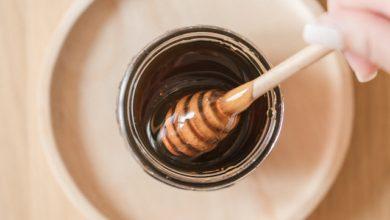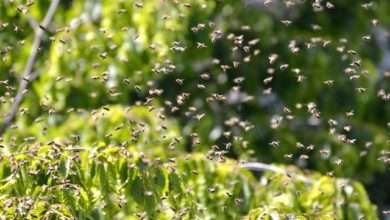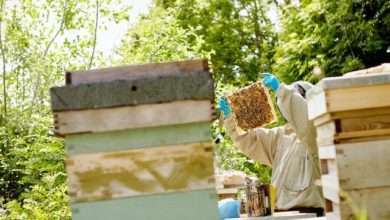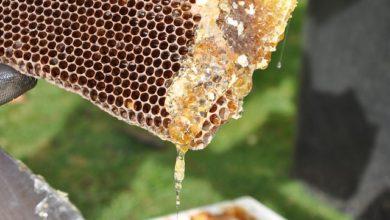Using a Propolis Trap

Before we begin discussing propolis traps we need to identify what propolis actually is and it’s role in the hive.
What is Propolis?
Honey bees acquire propolis, sometimes known as “bee glue,” from resinous plant and tree buds. Propolis is gathered by bees and used as a building material in the hive as well as a means of disease prevention.
Many lab tests conducted over a long period have demonstrated the effectiveness of propolis as an antibacterial and antiviral agent. Consequently, propolis presents a chance for beekeepers to increase their income via the extraction and processing of propolis as well as through the usage of propolis to enhance their health and well-being. How to get propolis from the hive is described by this technology.
Propolis is a compound made up of different concentrations of beeswax and resins that honeybees (Apis mellifera and stingless bees) collect from plants, especially from flowers and leaf buds but also from conifers, and then carry to the hive-like pollen pellets on their hind legs.
When the outside temperature is high, propolis becomes highly sticky.
Uses of propolis by bees
Propolis is used by worker bees to:
Minimize the size of hive entrances, repair combs, cover minor gaps in the hive, and line the interior of nest cavities and all brood combs
Any deceased animals or insects that are too large to be transported outside should be sealed off inside the hive
To combine a little propolis with wax to seal the brood cells.
These applications are crucial because they make use of propolis’ antibacterial, antiviral, and antifungal properties to safeguard the colony from illnesses.
How to collect propolis from the hive

By scraping it out of the hive or by using a specific tool, propolis can be harvested.
propolis being taken out of the hive and scraped
You can scrape the propolis out of the hive using the hive tool or a knife.
To avoid cutting away wood when removing the propolis from the hive, the knife shouldn’t be too sharp. Check to see if the knife or hive tool is clean.
It is best to prevent contaminating propolis with wax, wood, paint, and other objects.
Scrapings from frames or bottom boards and lids must be kept apart in order to prevent contamination with excessive wax.
To reduce the contact area and prevent oxidation as much as possible, chunks and fragments should be rolled into tiny balls.
There will be no oxidation of any of the propolis inside the ball.
A lot of times, before extraction, large fragments must be ground or broken into smaller ones.
Propolis may be harvested in greater or lesser quantities depending on the type of hive employed.
Small apertures in the hive might be made in order to encourage the bees to make more propolis.
Propolis is used by the bees to minimize or seal off the emerging holes.
The beekeeper can then gather this propolis for later use.
To prevent insects or other tiny animals from entering the hive through the apertures, care should be taken to avoid making the openings too large.
The quality of the propolis will be lower if the entrance is too large since bees will mix more wax with it.
Propolis Traps
Traps are essentially screens or special plates with tiny holes that resemble fissures in the hive walls. Bees strive to plug the holes in order to add propolis to the trap.
This trap is positioned on top of the hive, underneath the hive cover, and above the frames.
The most affordable trap design is a standard mosquito net covering a wide hole in the inner cover of a mobile frame hive that is fastened in place with nails.
The screen should not contact the top of the frames, though, to prevent wax contamination. This style of trap may also be used in topbar hives.
Using the propolis trap in the hive
To encourage bees to propolis unwanted gaps in the hive, light and air circulation in particular are crucial.
In order to improve air circulation and let some light into the hive, traps that are put on top of frames should be covered. However, the hive cover should be left slightly ajar.
In order to allow the bees to pass between the sheet and the frames, there should be around 1 cm between the propolis trap and the top of the frames.
When plastic sheets are cooled in the freezer or refrigerator for a few hours, propolis is removed from the traps.
By merely flexing, brushing, or pulling it over a table edge, the propolis can be easily removed from the screen once it has cooled and turned brittle.
The trap is then ready to be used again.
The plastic propolis screen and external cover can be increased in ventilation and light entry by inserting a tiny piece of wood between them. The bees are encouraged to cover the plastic screen’s openings with propolis as a result.
FAQ
Where do you put the propolis trap?
Bees attempt to plug the holes, which results in propolis being added to the trap. Above the frames and beneath the hive cover, this trap is positioned on top of the hive.
How do you extract propolis from a beehive?
During the honey harvest and when cleaning out the honey supers, propolis can be obtained by capturing the hive scrapings. Contrary to propolis obtained from a trap, hive scrapings are more likely to contain impurities such as pieces of wax, wood, dead bees, etc.
What does propolis smell like?
Intense fragrance characterizes propolis. The air is filled with a rich, complex aroma of honey, pollen, and plant compounds when the roof of a hive is removed.
Can you eat propolis from the hive?
It is easy; you can simply swallow raw propolis in its natural form. The flavor is sweet and almost molasses-like. There is currently no dose that is medically advised; however, most people take one (1) teaspoon per day.
How long does bee propolis last?
If preserved in an airtight container, like a mason jar, propolis will last a very, very long time—years. It resembles honey in certain ways, and archaeologists have consumed Egyptian honey that is 3,000 years old.
What happens if you eat propolis?
Propolis consumption may greatly lessen the signs and symptoms of gastritis and peptic ulcers, according to studies, whether propolis is consumed with or without honey. The use of propolis might promote recovery. By lowering inflammation, propolis may be able to aid with the symptoms of a number of chronic illnesses.
Is bee propolis good for your throat?
According to research, the resins from trees and plants used to make propolis, which is manufactured by bees, have antimicrobial and antibacterial qualities that can help prevent common throat infections and lower levels of germs that cause foul breath.
What does bee propolis do for humans?
Propolis is currently used in preparations for the cold syndrome (upper respiratory tract infections, the common cold, and infections similar to the flu), as well as dermatological preparations that aid in wound healing, the treatment of burns, acne, herpes simplex, and genitalis, and the management of neurodermatitis.
What happens if you take too much propolis?
Propolis can cause mouth ulcers if consumed in excess. Furthermore, propolis use may cause adverse reactions in persons who are allergic to bee products. The best course of action is to be aware of your allergens and get medical advice before using propolis.
Is propolis like an antibiotic?
A Natural Antibiotic is Propolis.
But it serves a lot more purposes than only construction. The healing qualities of propolis are extraordinary. The bees are shielded from bacterial diseases a form of the external immune system that it serves.
Who should not take bee propolis?
Conditions that cause bleeding: A specific propolis compound may delay blood coagulation. For those with bleeding disorders, taking propolis may raise their risk of bleeding. If you have allergies to honey, salicylates, conifers, poplars, Peru balsam, or any other bee products, you should avoid using propolis.




